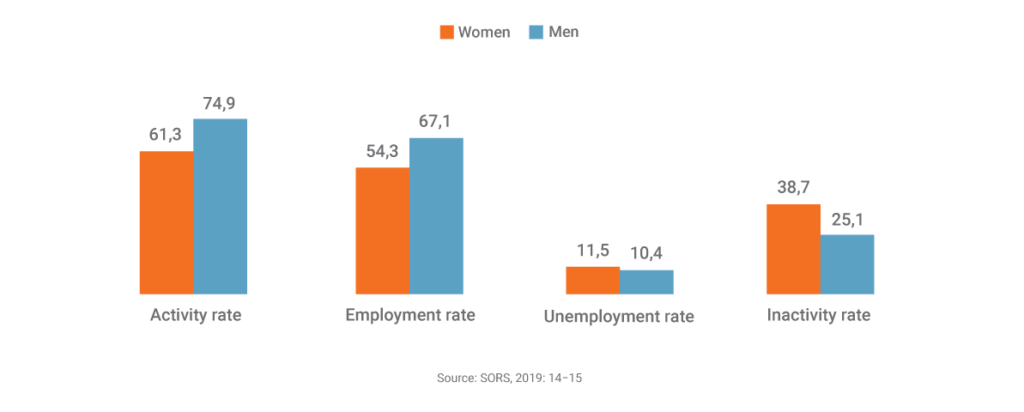The state of gender equality in Serbia has a few aspects. It has some elements of the preserved socialist heritage, with addition of gender inequalities that deepened during the difficult transition and social disintegration during the 1990s, as well as changes in systems and structures during the intensive transformation after 2000.
The last two decades of the reform process have brought about the establishment of a basic legal and political framework for improving gender equality. However, it seems that these reform processes are purely formal and do not lead to significant, substantial changes. The weakening of institutional mechanisms and marginalizing the issue of gender equality go side by side with with the weakening of democratic institutions and the strengthening of authoritarian tendencies in government and society.
Gender inequalities in different spheres are rooted in the patriarchal points of view and values of the population of Serbia. Most men and women find it acceptable that there are gender-specific roles for women and men, with roles in public life being more appropriate for men and those in private life for women.

In order to increase the participation of women in political decision-making, quotas for the underrepresented sex on the lists for parliamentary and local elections are prescribed by law. Thanks to these provisions, women make up more than a third of the MPs in the National Assembly and the same number of councilors in the municipal and city assemblies. However, the representation of women in the executive branch remains low, and they are even less represented in the highest positions of local government.
Access to different resources is extremely important for gender equality. When it comes to property rights, there are deep-rooted gender inequalities in Serbia, especially in rural communities. The main reason lies in the deep-rooted patriarchal inheriting patterns. Gender differences are also present in access to information and communication technologies (ICT) and means of transport, which are important for information, economic activity and social contacts.
Numerous differences that also exist in the field of education are later transferred to economic inequalities, since there are significant gender inequalities in the labor market. Women’s activity rates are lower, as are employment rates. There is a clear distinction between women and men by sector and occupation. Women are less likely to hold management positions in companies, and there are fewer of them among entrepreneurs. Finally, there are gaps in wages, although they are not as wide as in Western economies. Discrimination against women in employment and the workplace is widespread.

Gender inequalities go beyond the workplace. In our culture, unpaid domestic work is primarily the responsibility of women. Also, gender-based violence is widespread in Serbia, which is a consequence of structural inequalities in society and an omnipresent patriarchal attitude.
Women from marginalized groups are in an even more vulnerable position, i.e. women who are exposed to multiple marginalization – based on gender, but also on some other basis. The situation of Roma women is particularly unfavorable in all key dimensions of the socio-economic situation and human rights. Early marriages are a major problem, and according to the Istanbul Convention, they are a form of gender-based violence. Older women face problems related to pensions, adequate health care and long-term care. Women with disabilities face multiple barriers to social inclusion: they are almost completely excluded from the labor market, face physical and other barriers to accessing social institutions, and often lack adequate health and social protection.